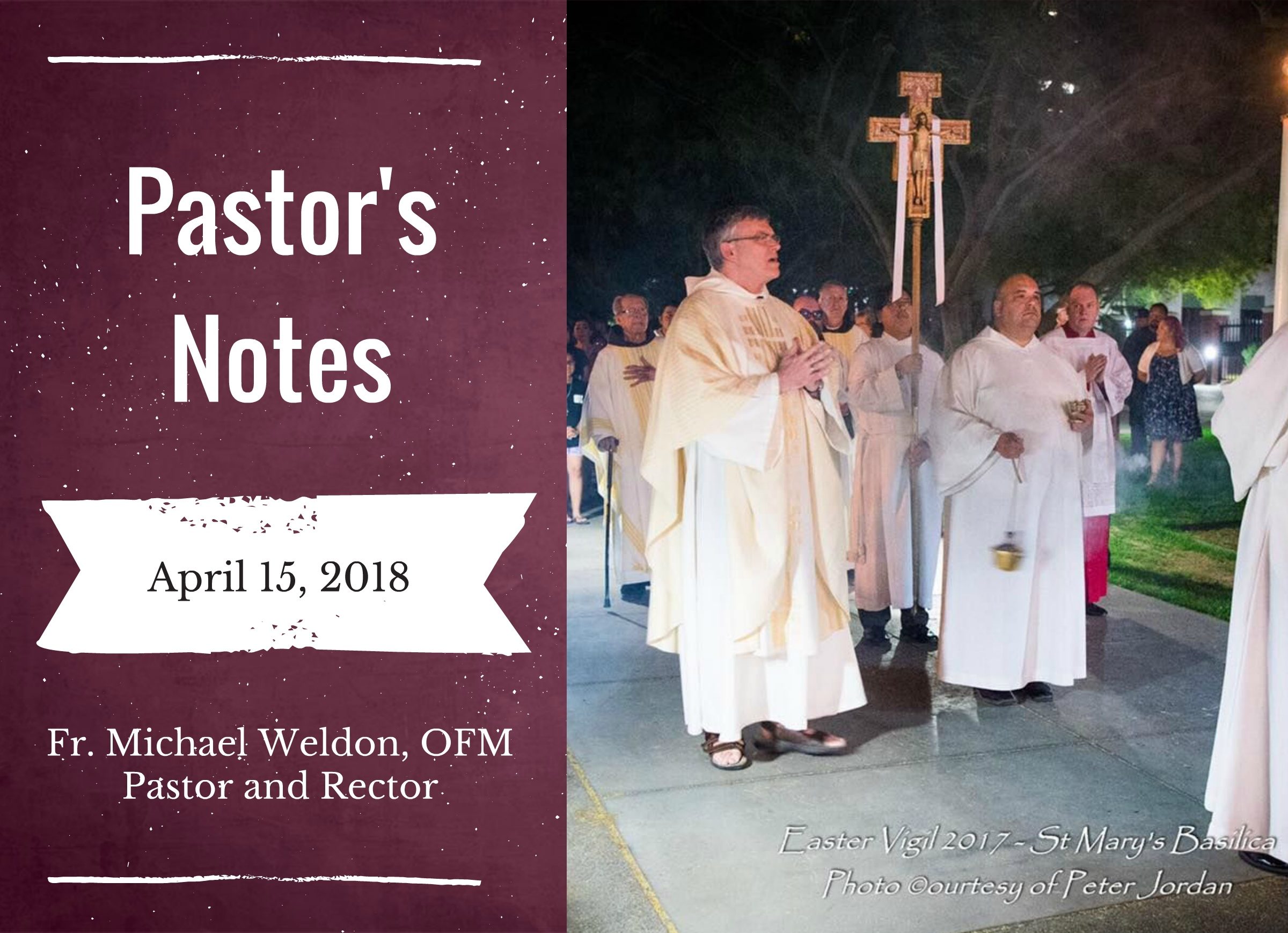St. Mary's Basilica
Phoenix, Arizona
Pastor’s Notes

Flowers were everywhere this season! We weren’t supposed to have enough. Since the great vigil on Holy Saturday, flowers are banked especially around the altar and Easter Candle. The smell and visual image of the “felices pascuas floridas” is a powerful sign of the paschal mysteries we have been celebrating. But as the weeks move on, it is a full time job to keep the Easter flowers brilliant. The heat came early and Sslowly they wilted. A few years ago a priest friend coined the word, “post-paschal depression.” After the high and energy of the resurrection it is difficult to keep the Easter spirit going for 40 days. Keeping the resurrection witness fresh takes that same kind of care and focus.
These Easter days, our friary chapel has lilies in front of the altar, the font and the ambo (or pulpit.) These liturgical furnishings signify Jesus’ death and resurrection all year round – that massive self-offering of love. The Constitution on the Liturgy from Vatican II says there are five presences of Christ in the liturgy: in the Eucharistic elements of bread and wine, in the priest himself, in the other sacraments, in the assembly and in the proclaimed Word. Hard to know which direction to genuflect!. The flowers in front of the ambo (pulpit) focus on that presence in the scriptures. Jesus’ life, death and resurrection are also present in the proclaimed Word of God. When the Word is proclaimed, as noted in the last line of the weekend’s Gospel passage, Jesus opens the minds of his listeners to understand the Scriptures. The Risen master then says one more thing to them… and to us. “You are witnesses of these things.” The liturgical assembly is incensed regularly in our most formal liturgies. We are a holy people. Hearing the Scriptures opened is not a Bible class, or historical look-back. Once the disciples experienced the risen Christ, they were reminded by the Lord resurrected to give witness to all they had heard and seen.
That is the task also of we “latter day” disciples (to borrow a word from our Mormon neighbors). Keep the mysteries fresh in our relationships, choices, investments, leisure and work. Bring to bear all we have seen and heard – first in the parking lot on the way out…and then to the ends of the earth. Big job.
In “The Wreck of the Deutschland,” Gerard Manly Hopkins uses “Easter” as a verb. As a nautical term, to “easter” means to steer a craft eastward, into the light. Easter as a verb is not just the name of this great festival we began two Sunday’s back, but the huge mystery of God’s redemptive love that the gospel can barely articulate. Easter is something we think, something we feel, and something we do.
“Let him easter in us,” that we may live in the light of his compassion, peace, justice, and forgiveness.
“Let him easter in us,” that we may be a healer like him, a teacher like him, a foot washer like him.
“Let him easter in us,” that we may bear our crosses for one another as he bore his cross for us.
“Let him easter in us,” that we may, at the end of our voyage, “Easter” in him.
A gentle week,
Fr. Michael Weldon, OFM
